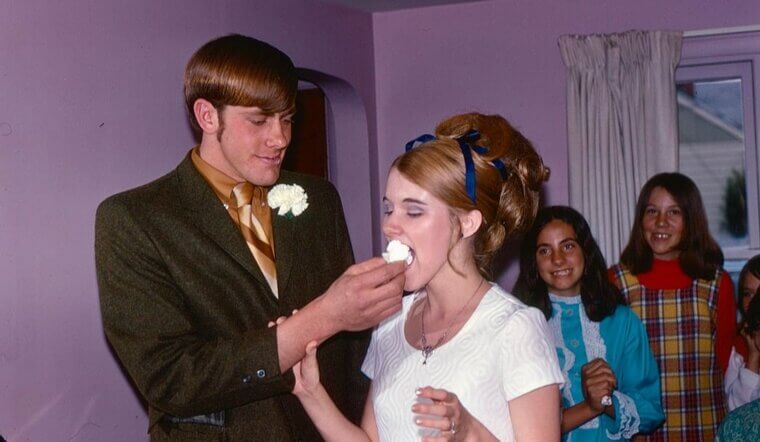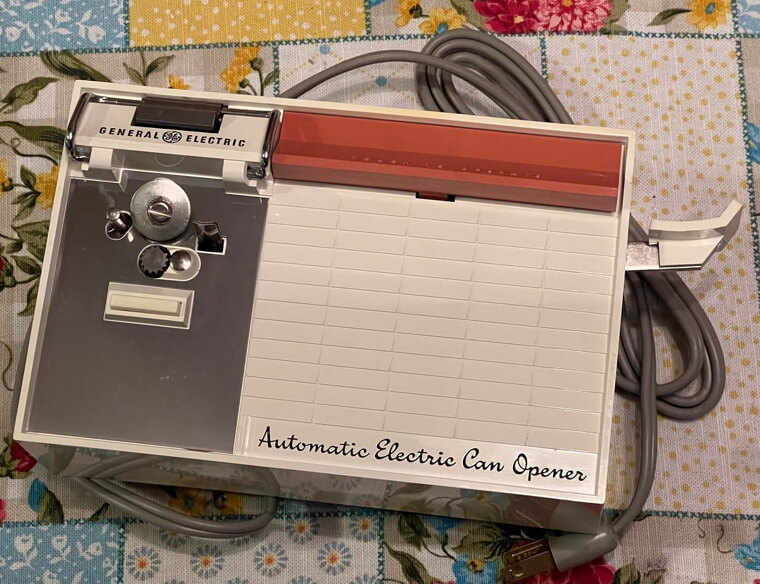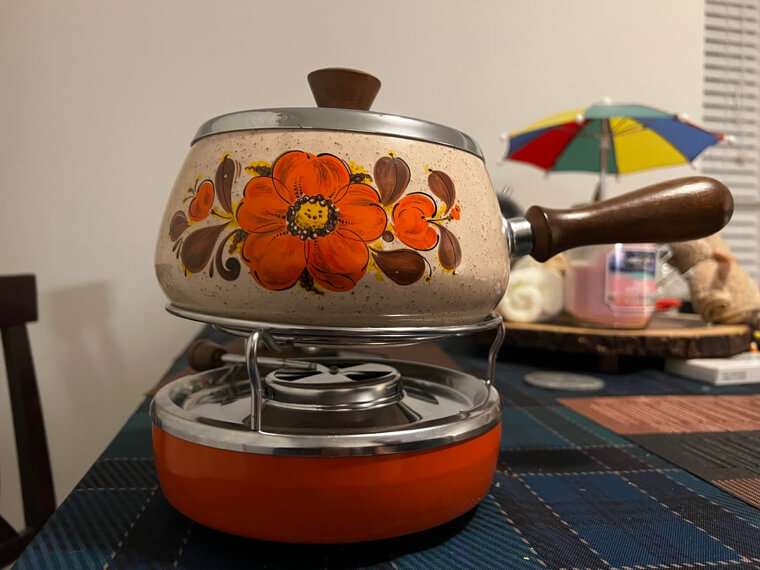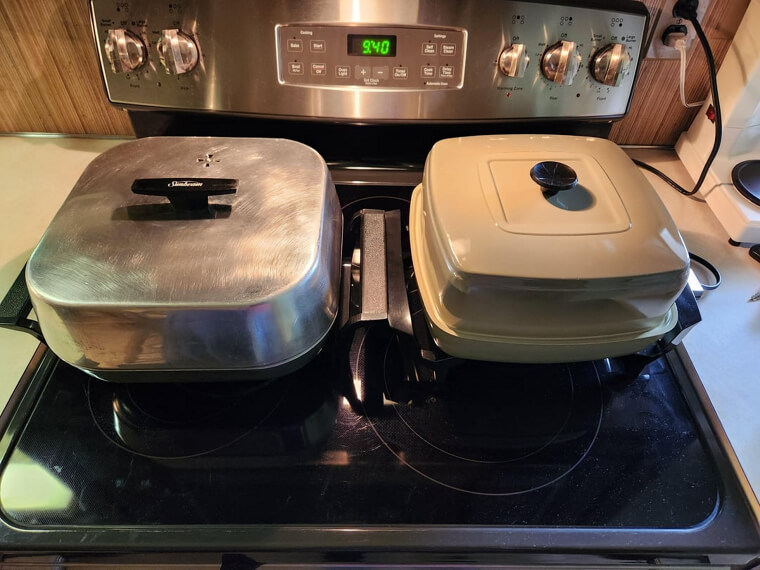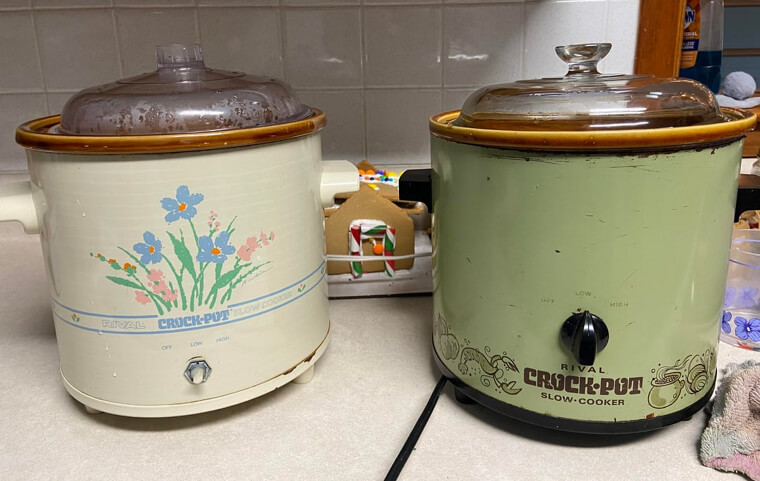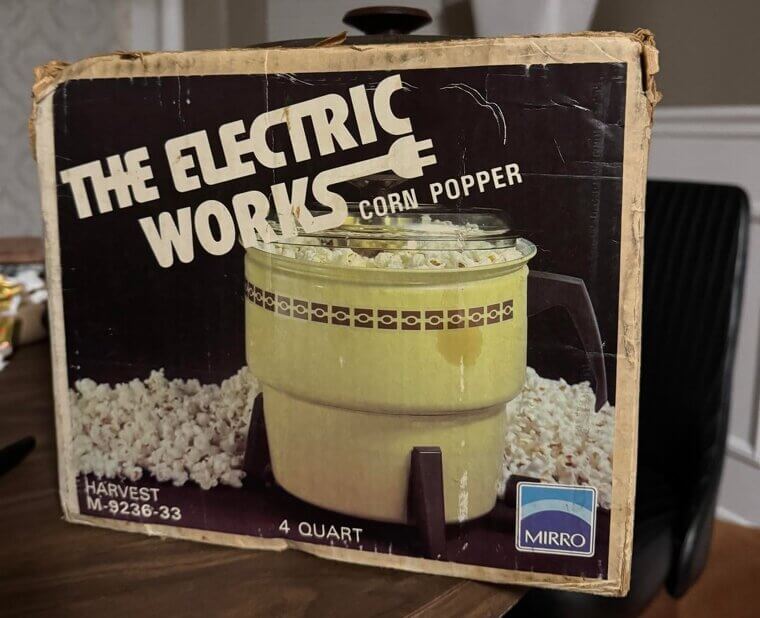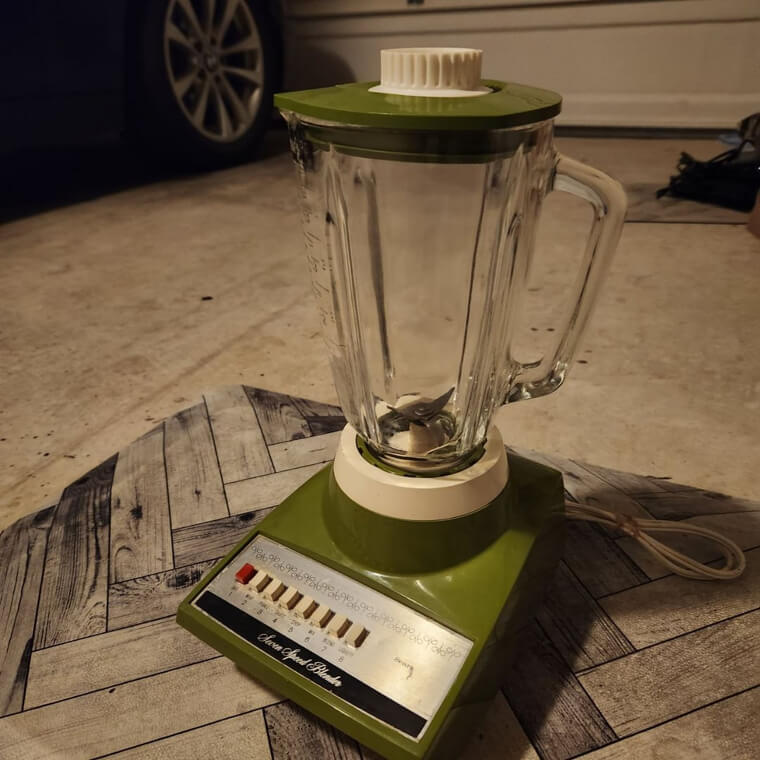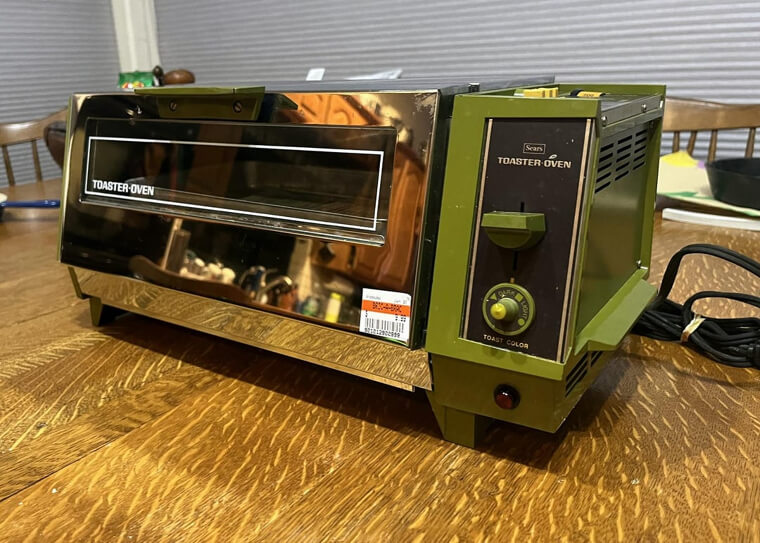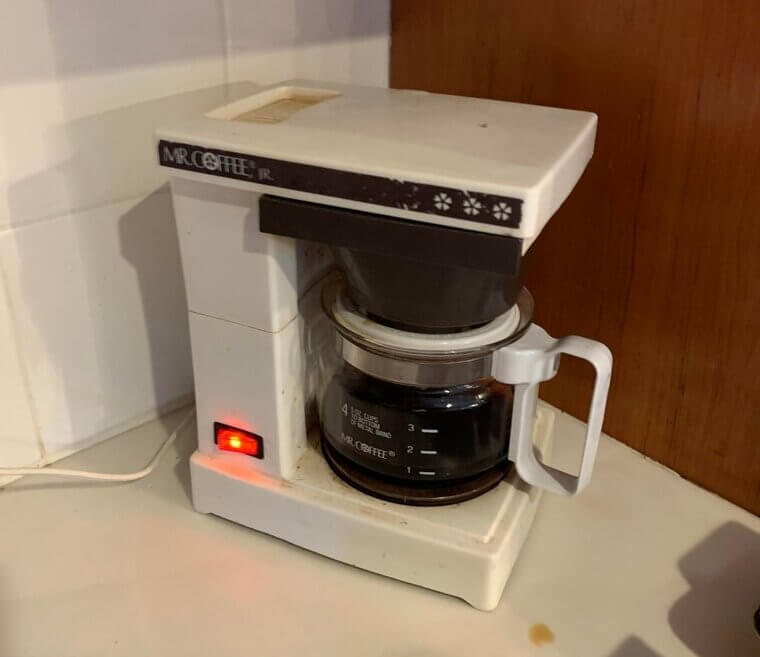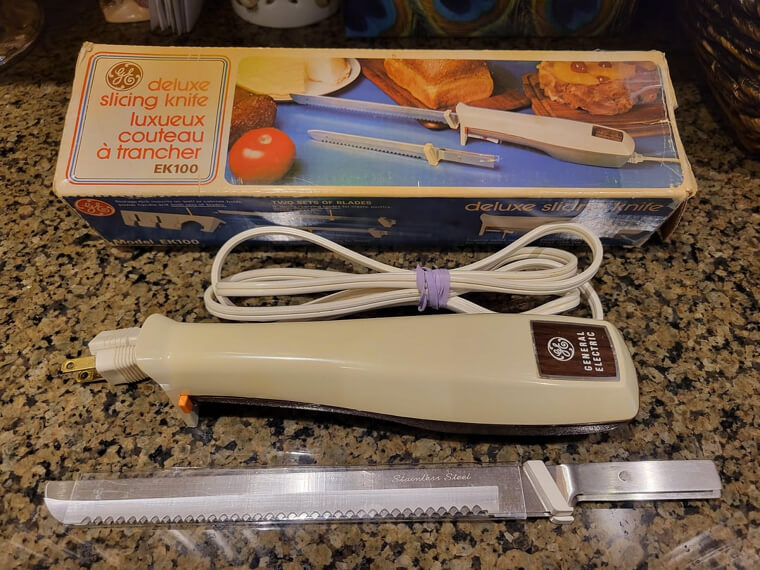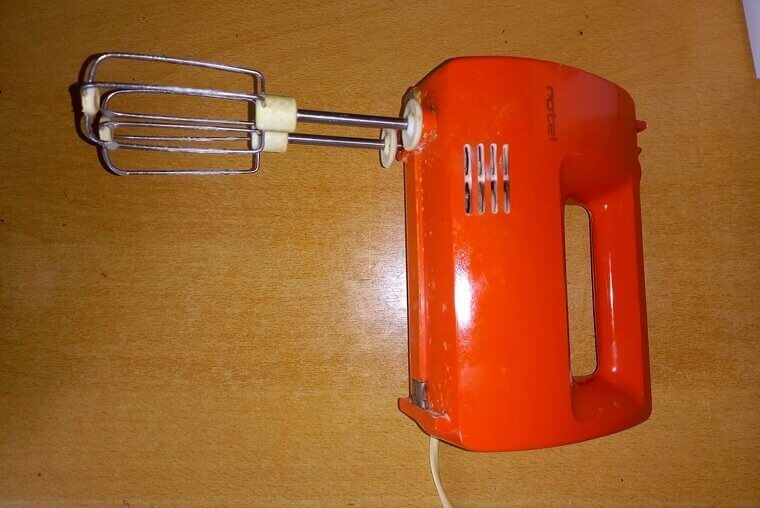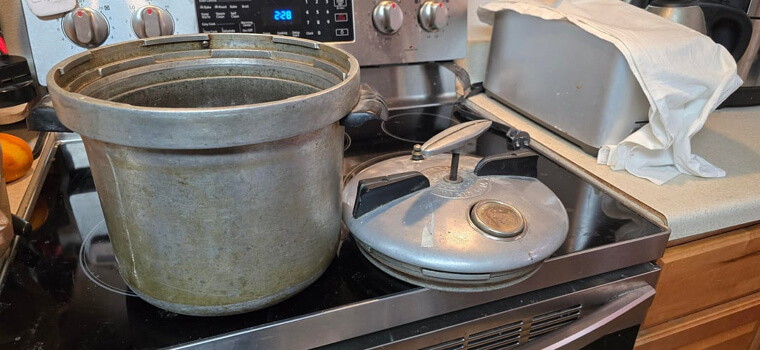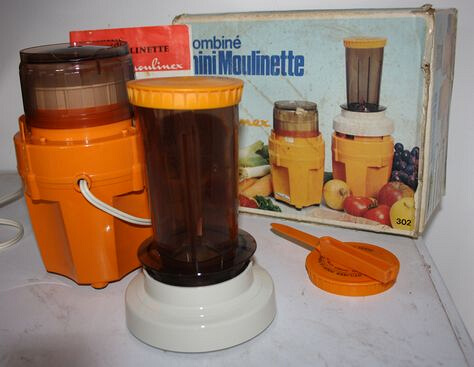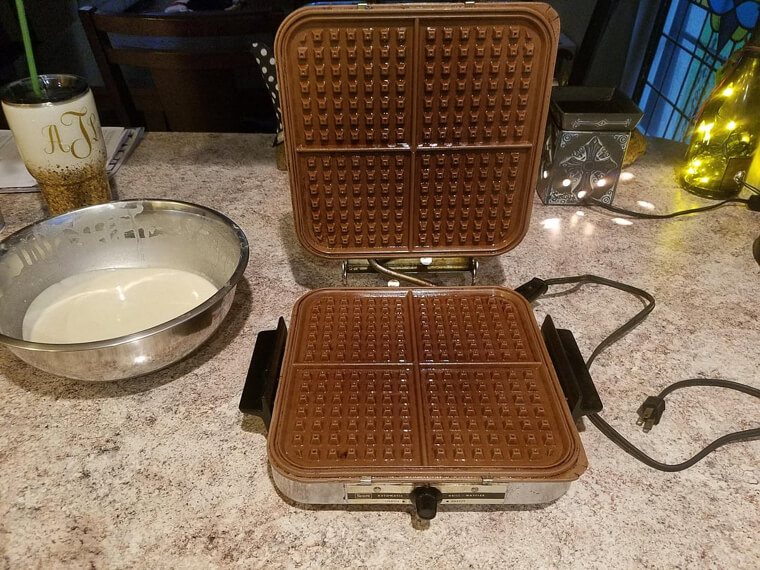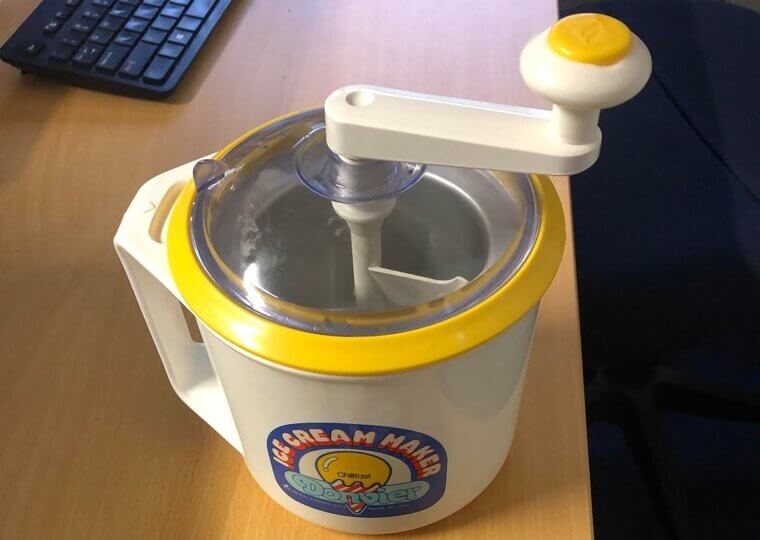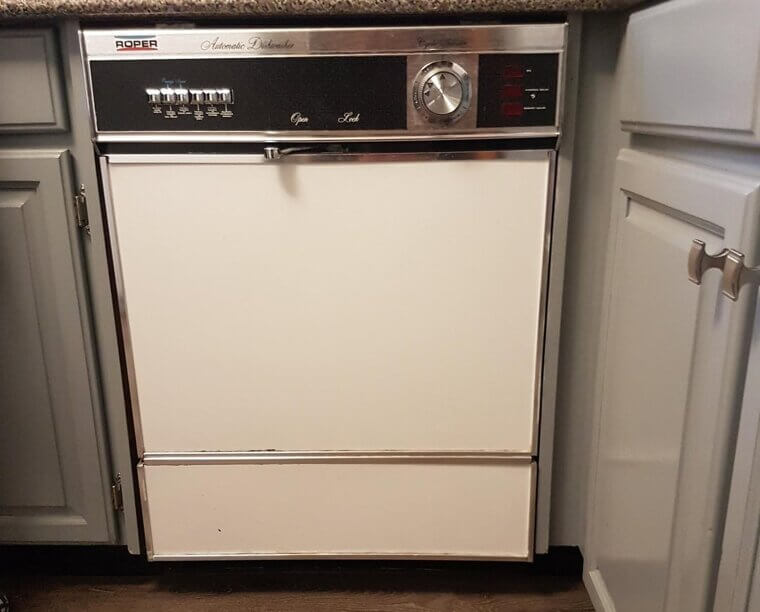Every Newlywed Couple Had to Have One of These Back in the Day
In the 1970s, the kitchen became the heart of every new marriage. Couples filled their homes with bright, humming gadgets that made cooking feel exciting and modern. From colorful blenders to sleek toasters and bubbling fondue pots, these appliances promised comfort, style, and a taste of the future. Each item represented more than convenience; it symbolized progress, partnership, and the thrill of creating a home together. Looking back, these treasures remind us how love and technology shaped a generation. Take a trip down memory lane and rediscover the kitchen essentials every newlywed wanted in the 70s.
The Electric Can Opener
In the 1970s, no kitchen felt complete without an electric can opener sitting proudly on the counter. For many newlyweds, it was more than a gadget. It was a symbol of progress and sophistication. Before these machines became popular, opening a can meant using a manual crank and occasionally spilling half the contents in the process. The electric version solved that instantly. It was fast, efficient, and futuristic. Couples adored the hum of the motor and the satisfying clink when the lid came loose. Available in trendy colors like avocado green and harvest gold, it fit perfectly with the aesthetic of the decade. It also often doubled as a knife sharpener, adding to its appeal. The electric can opener represented independence and the pride of running a modern home. It was one of the first appliances couples showed off when guests came over, proof that they were embracing convenience and technology. Though simple by today’s standards, it was the kind of innovation that made everyday chores feel easy. Many people still remember that gentle mechanical sound from their first apartments, a small reminder that even the tiniest bit of automation could feel like a glimpse into the future.
The Fondue Pot
No 1970s kitchen was complete without a fondue pot, and no dinner party was truly successful without it. The fondue craze swept through newlywed households with full force, combining fun, food, and friendship into one experience. Couples loved entertaining, and the fondue pot was the perfect centerpiece. Friends gathered around bubbling cheese or melted chocolate, dipping bread cubes, fruit, and vegetables on long forks while laughing over conversation. It made hosting feel effortless, even glamorous. The pots came in bold enamel finishes, deep oranges, mustard yellows, or sleek metallic tones that matched shag rugs and patterned wallpaper. Magazines were full of fondue recipes, and new brides often received fondue sets as wedding gifts. Beyond its practicality, the fondue pot captured the spirit of togetherness that defined the decade. It encouraged people to linger at the table and talk instead of rushing through meals. It was about sharing, not just eating. For many couples, that little bubbling pot symbolized everything they wanted from their new life together: warmth, connection, and a touch of modern sophistication. Though fondue parties eventually faded from fashion, the fond memories of cheese, chocolate, and laughter have never really disappeared.
The Electric Skillet
The electric skillet was a revolutionary appliance for small kitchens and newlyweds eager to make real meals together. It could fry, sauté, simmer, and bake without ever touching the stove. Apartment living in the 1970s often meant limited space, and the electric skillet became a savior for couples who wanted to cook without a full kitchen setup. It offered even heating, adjustable temperature controls, and a see-through lid so you could watch your meal come together. Whether frying chicken, making pancakes, or cooking casseroles, it handled almost everything. Its versatility made it a favorite wedding gift, and ads in magazines promised that it would “make any cook feel like a professional.” It also doubled as a serving dish, moving from countertop to table with ease. The polished metal or colored enamel matched the era’s décor trends perfectly. Using an electric skillet meant freedom and creativity, a way to try new recipes without worrying about space or mess. For many newlyweds, it became the first appliance they truly relied on daily, a dependable partner in those early days of learning how to balance work, marriage, and the art of dinner for two.
The Crock-Pot
The Crock-Pot changed home cooking forever, and newlyweds of the 1970s were among its biggest fans. Before slow cookers, preparing a hearty meal meant hours in the kitchen. The Crock-Pot promised something revolutionary: start dinner in the morning, go about your day, and come home to the smell of something wonderful. It quickly became a favorite wedding gift and a fixture on every couple’s counter. The concept was simple but brilliant. Busy couples could throw in meat, vegetables, and spices, turn a knob, and trust that dinner would be ready by evening. It made working life easier and gave people time to focus on each other instead of chores. The Crock-Pot reflected a cultural shift toward convenience without sacrificing comfort. It allowed couples to cook from scratch but still manage their schedules. Many remember the scent of beef stew or pot roast simmering slowly through the day, a kind of culinary reassurance that home was warm and waiting. The slow cooker became more than a gadget. It was a symbol of balance, proof that love and practicality could share the same space on the kitchen counter.
The Popcorn Maker
In the 1970s, staying home for movie night became a favorite pastime, and no movie night was complete without a popcorn maker. Whether it was an air popper or a classic oil-based machine, it brought theater magic into the living room. Newlyweds loved it because it was cheap, easy, and social. The sound of popping kernels filled small apartments with excitement, and the smell was irresistible. Couples experimented with toppings- melted butter, cheese powder, or even cinnamon sugar- and shared bowls while watching television on the floor. Popcorn makers also reflected a new attitude about home life. They made small luxuries possible on tight budgets and turned ordinary nights into memorable ones. The machines themselves came in cheerful colors that matched the decade’s bold design choices. A popcorn maker wasn’t just about food; it was about atmosphere. It represented coziness, companionship, and a growing trend of enjoying entertainment at home instead of going out. For many, it became one of the most beloved kitchen items they ever owned, still sitting proudly in cupboards decades later as a reminder of simpler, happier nights.
The Blender
Blenders became essential for newlyweds in the 1970s, symbolizing creativity and modern living. Tall, sturdy, and often noisy, these machines were designed to do it all. From smoothies and milkshakes to soups and cocktails, the blender became the heart of the kitchen for couples exploring new recipes together. Color coordination mattered too. Blenders came in bright hues like harvest gold, chocolate brown, and avocado green, matching the kitchen appliances and décor trends of the decade. The idea of blending fruits or crushing ice at home felt futuristic, almost luxurious. Couples used them to entertain, serving daiquiris or homemade dips during gatherings. The blender also played into the health movement of the time, allowing people to make fresh juices and protein shakes. For many newlyweds, it was the appliance that made them feel like adults, capable of turning simple ingredients into something impressive. Durable and dependable, many blenders from that era still work today, a testament to their quality and design. In its own way, the blender captured the optimism of the 1970s: practical, stylish, and always ready to bring people together around good food.
The Toaster Oven
Compact yet powerful, the toaster oven was one of the most desirable wedding gifts of the 1970s. For newlyweds in apartments, it meant independence and convenience in one small appliance. It could toast bread, bake casseroles, or reheat leftovers, making it perfect for couples learning to balance work and home life. Unlike traditional ovens, it preheated quickly and didn’t overheat small kitchens. Models often came with chrome finishes and simple dial controls that gave them a sleek, futuristic appearance. Ads promoted them as “the smart cook’s companion,” and for good reason. They were versatile, efficient, and space-saving. Newlyweds often used them for everything from English muffins in the morning to baked potatoes at night. They made cooking for two simple and even romantic. It was a symbol of practicality and comfort, proof that you could create delicious meals without a full-sized kitchen. For many couples, the toaster oven became one of the first appliances that truly felt like their own- a little piece of adulthood that sat right on the countertop and quietly made life easier every single day.
The Percolator Coffee Pot
Before modern drip machines, mornings began with the bubbling rhythm of a percolator. For 1970s newlyweds, that sound was the soundtrack of domestic life. Percolators brewed strong, aromatic coffee that filled the kitchen with warmth and promise. Stainless steel versions gleamed beside the toaster, while electric models with glass knobs allowed couples to watch the brew rise and fall. The process was unhurried, part of the ritual that started every day together. Sharing coffee meant more than caffeine- it was time to talk, plan, and enjoy each other’s company. The smell alone could make a small apartment feel like home. Wedding gift registries often included percolators, and brands like GE and West Bend made them stylish as well as reliable. The percolator represented comfort and connection, the quiet moments before the rush of work and errands began. Though replaced by newer machines over the years, many people still remember the gurgle and hiss that signaled the first pot of the morning. It was simple, personal, and perfectly suited to a slower, more intentional time.
The Electric Knife
The electric knife was a true novelty in the 1970s kitchen. With its humming motor and twin blades that sliced with precision, it made carving roasts, turkeys, and even bread effortless. For newlyweds eager to host dinner parties, it was both practical and impressive. Using it felt modern, almost professional. Guests would watch as the perfectly even slices fell onto the platter, and the cook would smile with pride. It came in sleek white or silver, often stored in a custom box when not in use. While not used daily, it became an event tool, brought out for holidays or Sunday dinners. It fit perfectly with the era’s fascination with gadgets that made life easier and more efficient. The electric knife gave young couples a sense of confidence in the kitchen, turning everyday meals into special occasions. It was a product of optimism, innovation, and a belief that technology could elevate even the most traditional parts of domestic life. For many, that little hum in the kitchen became a sound forever linked with family gatherings and the warmth of home.
The Hand Mixer
Simple, compact, and indispensable, the hand mixer earned its place in every 1970s kitchen. Newlyweds used it to make mashed potatoes, whipped cream, and cookie dough without the muscle strain of manual mixing. It was easy to store and even easier to love. Unlike bulky stand mixers, the hand mixer fit perfectly in small spaces, making it ideal for apartments and first homes. It was often one of the first appliances gifted to couples, symbolizing teamwork and shared effort in the kitchen. Its chrome or pastel designs matched the other countertop appliances, keeping everything coordinated. The hand mixer gave couples confidence to experiment with baking and home cooking, often leading to late-night brownies or Sunday pancakes made together. It represented a shift in household dynamics too, as cooking became more collaborative. For many, the whir of a hand mixer became the background sound of their early years of marriage. It wasn’t glamorous, but it was practical and dependable, exactly what a home should be.
The Pressure Cooker
Before the Instant Pot made a comeback decades later, the pressure cooker was the go-to tool for home chefs who wanted hearty meals in record time. In the 1970s, newlyweds saw it as a symbol of modern efficiency. With a loud hiss and clattering lid, it turned stews, beans, and roasts into tender perfection faster than any other method. The learning curve was steep, and more than one couple had a nervous laugh the first time they used it, but the results were worth it. Cookbooks promised meals “done before you can set the table,” and that convenience appealed to busy young couples juggling jobs and home life. Pressure cookers were often made from durable stainless steel, designed to last a lifetime. They sat proudly on stovetops, gleaming under kitchen lights. The feeling of mastering one brought a real sense of accomplishment. For many, it became the heart of Sunday dinners and family traditions that carried on long after the honeymoon phase ended. It was loud, unpredictable, and full of personality, much like marriage itself.
The Food Processor
When food processors first appeared in the 1970s, they felt like something out of science fiction. They chopped, shredded, and mixed in seconds, replacing what used to take half an afternoon with a knife and cutting board. Newlyweds fell in love with the convenience and sophistication. Brands like Cuisinart marketed them as the ultimate kitchen revolution, and they quickly became the appliance everyone wanted to show off. Couples could make pie crusts, salsa, and coleslaw effortlessly, all while keeping their hands clean. It was not just a time-saver but a confidence booster. The food processor gave beginners the courage to cook more elaborate dishes without fear of failure. Its sleek design and transparent bowl made it both functional and beautiful, fitting right into the era’s fascination with technology and modernity. It wasn’t cheap, so owning one felt like a milestone. For many couples, it marked the moment they went from newlyweds to real homeowners, complete with the tools to prove it. The hum of the motor and the smell of fresh ingredients became part of their shared domestic soundtrack.
The Waffle Iron
Few appliances brought as much simple joy to a 1970s kitchen as the waffle iron. For newlyweds, it turned an ordinary breakfast into a celebration. Sunday mornings became rituals of batter, butter, and syrup. The waffle iron’s design, often chrome or enamel, fit perfectly into the colorful kitchens of the decade. It represented comfort and indulgence, something that felt both homemade and special. Couples experimented with toppings, turning waffles into their own little tradition. Ads at the time sold it as a symbol of togetherness, a small luxury that brought happiness to busy lives. It also reflected a growing love of brunch culture, a sign that home-cooked meals could feel like restaurant experiences. The smell of waffles cooking slowly filled every corner of small apartments, and that scent became one of those small but lasting memories. For many couples, the waffle iron stayed with them for decades, a relic of early marriage that always worked, even when newer appliances came and went. It was proof that the best things in life were often the simplest.
The Ice Cream Maker
Owning an ice cream maker in the 1970s felt almost magical. Long before premium brands filled grocery store freezers, homemade ice cream was a treat that made any evening special. Newlyweds loved experimenting with flavors and sharing the results with friends. Cranking the machine by hand or using early electric versions was half the fun. The process took time, but that made it satisfying. Magazines were full of recipes for vanilla, chocolate, and strawberry, with more adventurous couples trying pineapple or mint chip. The ice cream maker became a summer tradition, tied to warm nights, laughter, and neighborhood gatherings. It also reflected a simpler kind of joy. Making something from scratch, waiting patiently, and tasting the results together brought a feeling of accomplishment that money could not buy. Even the hum of the machine as it froze the mixture carried a kind of comfort. For newlyweds of the 70s, it wasn’t just dessert. It was a memory in motion, spinning quietly in a kitchen filled with love, optimism, and the sweet promise of the years ahead.
The Dishwasher
Of all the appliances that symbolized progress, none felt as luxurious to 1970s newlyweds as the dishwasher. After decades of handwashing, couples could finally relax after dinner instead of standing at the sink. It was expensive and not yet common in every household, which made it a true status symbol. The convenience was astonishing. Load it, press a button, and walk away. Ads promised more time together, fewer chores, and sparkling dishes every time. For many young couples, it represented success, proof that they were stepping into a modern lifestyle their parents had only dreamed of. Dishwashers were noisy, bulky, and not always perfect, but they were beloved. Even the sound of one running in the background became part of domestic life. It offered not just clean plates but the rarest commodity of all: time. That small freedom made evenings longer, conversations easier, and marriage just a little smoother. Looking back, it is easy to see why so many couples considered it the ultimate wedding gift. The dishwasher may not have been glamorous, but it was the one appliance that truly made everyday life feel lighter.

